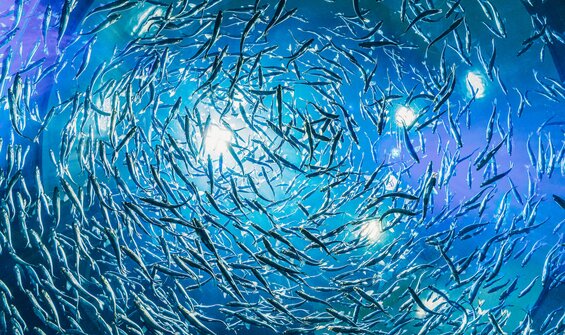Our new NorthStandard site is now live. There will be no new content or updates added to this site. For the latest information, please visit our new site north-standard.com.
Alternative Fuels TEST
As one of the world’s leading P&I insurers, we are committed to helping our members and shipowners across the globe make a safe, sustainable and successful transition to greener energy solutions.
The 2015 Paris Agreement on climate change – agreed by the majority of United Nations members – sets challenging and far-reaching goals that require sizeable reductions in carbon dioxide (CO2) emissions and greenhouse gases (GHG).
The International Maritime Organisation (IMO) has made the urgent need to address climate change a prominent feature of its strategic plan, and sets out its own ambitious goals for the shipping industry between now and 2050 (all compared to 2008 levels):
By 2030
- Reduce CO2 by at least 40% (compared to 2008 levels)
By 2050
- Reduce CO2 by at least 70%
By 2050
- Reduce total annual GHG emissions by at least 50% with an aim to phase them out entirely within this century.
We are focused on a supportive role that, through the entire timeline, provides members and brokers with all the information needed to make an informed choice and decision along the journey to decarbonization.
Alternatives to fossil fuels
Despite the need for urgent action, there is some inertia in the industry. This is largely caused by the lack of clarity and direction about which alternative to adopt and the need for greater detail on the potential safety, cost of implementation, the emissions efficiency of each fuel on both ship and shore, and the ‘well-to-wake’ carbon impact.
Currently, the shipping industry is considering a number of alternative fuels as replacements for conventional fuels, all with their own unique set of benefits – and challenges.
The main alternatives to fossil fuels being considered are:
Ammonia (NH3)
Currently mass-produced worldwide by extracting hydrogen from hydrocarbon fuels and combining it with nitrogen extracted from liquified air.
Benefits
- No CO2 emissions.
- Conversion process is relatively cheap and uncomplicated.
- ‘Green’ production, using green hydrogen and renewable power for the conversion process, is possible.
- Established commercial product, already produced in substantial volumes for the chemical industry and distributable using existing infrastructure.
- Commonly transported as cargo, so issues around handling ammonia onboard are already understood.
- Used for combustion in gas turbines.
- Low fire risk.
- Higher energy density than hydrogen.
- Storage only requires refrigeration.
Challenges
- Currently made using natural gas. The conversion process requires additional energy compared to green hydrogen.
- Requires energy for refrigeration.
- Less energy dense than heavy fuel oils (HFO) – requires 24x more storage to match HFO performance and/or more frequent refuelling.
- Large fuel volume (almost 3x times HFO).
- GHG impact of N2O emissions is 300x greater than CO2.
- Highly toxic – requiring careful handling.
- Technical challenges in combustion, such as low flammability (without pilot fuels) and difficulties in increasing engine output.
- Large capital investment needed for storage and refuelling infrastructure for shipping
- Increased corrosion risk of certain metals and alloys, such as copper, brass and zinc.
Biofuels
A term covering a range of liquids or gases derived from ‘biomass’, such as plant fibres, or ‘bio-waste’ – difficult to break down dry plant matter such as trees, bushes and corn stalks. Among others, biofuels include fatty-acid methyl ester (FAME) biodiesel, hydrotreated renewable diesel, bio-methanol and straight vegetable oil (SVO).
Benefits
- Commonly used biofuels are hydrotreated vegetable oil (HVO) and biodiesel (FAME, fatty acid methyl ester).
- Carbon neutral - derived from biologically renewable resources such as plant-based sugars, etc.
- Usually blended with traditional marine fuels or used as a ‘drop-in’ fuel, compatible with current conventional marine engines
- Non-toxic, biodegradable properties and reduced GHG emissions when burned.
- Biodegradable in the event of a spill.
- Potentially widely available through a variety of production methods.
- Reduced fire risk.
Challenges
- Higher cost compared to many fossil fuels.
- Limited production capacity and availability, plus competition from existing industries such as agriculture.
- Potential machinery breakdown including storage stability, biological growth (biofouling), acidity, plugging of filters, and increased engine deposits if not managed properly.
- Larger storage required for long journeys, compared to petrochemicals.
- Potential degeneration/deterioration of biofuel and possible compatibility issues with some conventional fuels.
Hydrogen (H2)
Commonly produced by converting natural gas or coal into hydrogen gas and CO2.
Benefits
- No CO2 emissions
- Suitable for use in fuel cells for small vessels
- ‘Green’ production by way of electrolysis powered by renewable energy is possible
- Falling cost of renewable energy may lower green production costs.
Challenges
- Does not exist naturally - produced mostly from fossil fuel sources (energy-intensive process). ‘Green’ production currently expensive
- Low energy density
- Large fuel volume (require 8 times more volume than fuel oils for equal power output) - consequent storage capacity issues
- Fuel cells not currently capable of powering large vessels
- Requires a temperature of -253C to stay in liquid state
- Immaturity of bunkering technologies
- Lack of bunkering infrastructure
- Highly combustible and explosive, giving rise to safety issues
- Combustion produces nitrous oxides (NOx emissions)
- Large capital investment needed for storage and refuelling infrastructure for shipping
Liquified natural gas (LNG)
Consists of 96% methane and produced by cryogenically treating natural gas until it becomes a liquid.
Benefits
- Already in practical use
- Infrastructure being developed
- Lower in cost as compared to traditional marine fuels
- High energy density
- Specific regulations for LNG in IMO’s International Code of Safety for Ships using Gases or other Low-flashpoint Fuels (IGF Code)
Challenges
- Commonly known as a ‘transition fuel’ as reduction of CO2 emissions is limited
- Requires a temperature of -162C to stay in liquid state
- Low volumetric density (storage takes nearly twice the space of traditional marine fuels)
- Bunkering, storage and handling requires much more care than traditional marine fuels
- Methane slip (GHG impact 25 times greater than CO2 emissions)
- Possible criticism for the use of fossil fuel
Liquified petroleum gas (LPG)
Either butane or propane, or a mix of the two, produced by refining crude oil or processing raw natural gas.
Benefits
- Lower in cost as compared to traditional marine fuels
Challenges
- Similar to LNG, reduction of CO2 emissions is limited
- As with LNG, LPG storage requires larger tanks
- Limited operational experience
- Lack of bunkering infrastructure
- Slippage factor (GHG impact 3-4 times higher than CO2 emissions)
- Possible criticism for the use of fossil fuels
Methanol (CH3OH)
Produced from carbon, typically natural gas and coal, but can also be produced from a number of renewable sources including ‘biomass’ and waste products.
Benefits
- Liquid at ambient temperatures, no need to heat or cool
- Easy to store and handle
- Low cost for conversion of existing engines
- Minor modifications to existing storage and bunkering facilities
- Widely traded, well understood and already available in some ports for bunkering
- Biodegradable, with a lower impact on the environment in the event of spillage
- More energy dense than hydrogen and ammonia
- Clean burning fuel with low levels of SOx, NOx and particulate matter.
Challenges
- Production mainly from natural gas or coal, as such reduction of CO2 emissions is limited
- Lower energy density than fuel oil
- Large fuel volume approx. 2.4 times that of fuel oil - requiring larger storage tanks and/or more frequent bunkering
- Low flash point represents a fire risk
- Toxic when inhaled, ingested or handled
- Increased corrosion risks
- Large capital investment needed for more widespread storage and refuelling infrastructure for shipping
Energy Efficiency Technology (EET)
Including electric propulsion, solar power, wind power, carbon capture technology, hydrogen fuel cells, hull form and propellor optimisation, exhaust heat recovery, and low friction hull coatings.
Benefits and Challenges
Electrical propulsion
- Pure battery-electric propulsion using Lithium Ion (Li-ion) batteries has been successfully applied on small, short-sea vessels.
- Potential to combine batteries with a two-stroke main engine in a hybrid system for larger ocean-going vessels currently under evaluation.
Solar power
- Uncommon – some marine grade solar panels have been installed on certain types of ships, such as car carriers, bulkers, passenger ferries and smaller domestic vessels.
- May not suit container vessels because of the space required.
- Technology is in its infancy and though expected to become less expensive, panels are unlikely to become much more efficient or require less space.
Wind power
- Readily available but considered as an auxiliary propulsion system – most wind-assisted systems require a second energy source to operate.
- Operational costs (maintenance, spare parts, replacement of components, etc.) need to be considered vs potential fuel-saving.
Alternative Fuels Resources
Key Contacts
Yves Vandenborn
Head of Loss Prevention - Asia Pacific
yves.vandenborn@north-standard.com
140 Cecil Street
#16-03/04 PIL Building
069540
Singapore
David Roberts
Head of Asia Pacific
david.roberts@north-standard.com
140 Cecil Street
#16-03/04 PIL Building
069540
Singapore
View all members of our Alternative Fuels Working Group
-
Eva Kelesidou
Claims Director - Greece
-
Gina Venezia
General Counsel / Head of Commercial - Americas
-
Jamie Wallace
Global Head of Specialty Claims/Deputy Global Head of FD&D Claims
-
Oliver Wassell
Underwriter - Offshore & Renewables
-
Rupert Banks
Head of Specialty Claims - Asia Pacific, P&I Claims Director - Asia Pacific, North Asia Pacific Lead
-
Sian Meadows
Head of Underwriting - Offshore & Renewables
-
Fabien Lerede
Head of Claims - Strike & Delay
-
Simon Kaye
Global Head of Reinsurance
-
Hannah Morris
Head of Underwriting - Americas, UK & Ireland

















